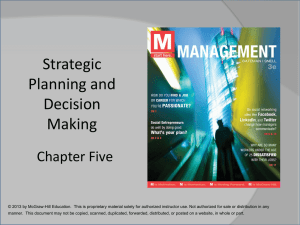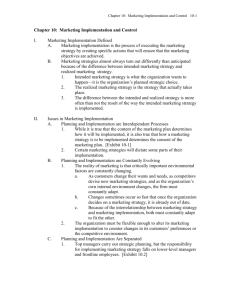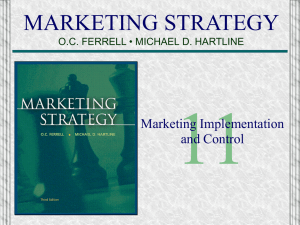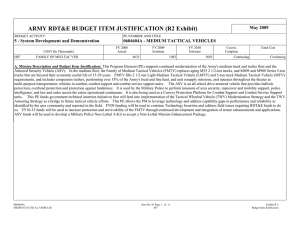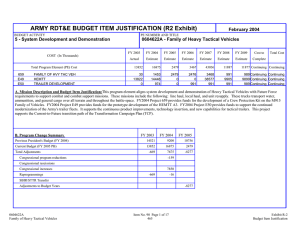Chapter Two
advertisement
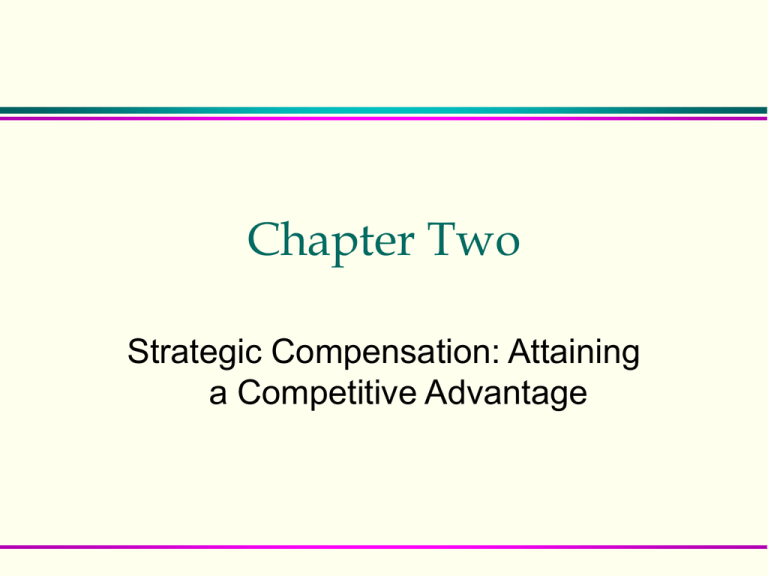
Chapter Two Strategic Compensation: Attaining a Competitive Advantage Background Historical perspective » Scientific management, time and motion studies » Welfare practices, federal and local laws » Competitive advantage (firm’s ability to maintain market share and profitability over a sustained period of several years.) – Compensation—promoting more-productive and highly skilled work forces. Merit pay to reinforce performance. Incentives to connect pay and work. Pay for knowledge. Discretionary benefits. » Technology, job design, global competition Strategic vs Tactical Compensation Competitive strategy choices » Cost leadership » Differentiation Tactical decisions that support the firm’s strategy » Human resource tactics » Tactics in other functional areas Exhibit 2-1 Relationship Between Strategic and Tactical Decisions • Competitive strategy • Human resource strategy • Compensation strategy Strategic Decisions General Tactical HR Decisions • Recruitment • Compensation • Selection • Training • Performance appraisal Specific Tactical HR Decisions (Comp. Examples) • • • • • Seniority pay • Skill-based pay Merit pay • Broadbanding Incentive pay • Two-tier pay Pay-for-knowledge structures Discretionary benefits options General Specific Exhibit 2-3 Influences on Competitive Strategy National Culture » » » » Power distance Individualism-collectivism Uncertainty avoidance Masculinity-femininity Organizational & Product Life Cycle Organizational Culture » Traditional organizational hierarchy » Flatter organizational structures » Team orientation » Growth » Maturity » Decline Exhibit 2-4 Traditional Organizational Structure Chief Exec. Officer President Executive VP VP Accounting VP Finance VP HR VP Mfg. VP Marketing Director Accounting Director Finance Director HR Director Mfg. Director Marketing Manager Accounting Manager Finance Manager HR Manager Mfg. Manager Marketing Exhibit 2-7 Factors That Lead to Dysfunctional Turnover Dysfunctional Turnover General Economic Conditions Turnover increases when general economic conditions are favorable. Labor Market Conditions Turnover increases when demand for employees increases. Personal Mobility Turnover increases with fewer family responsibilities. Job Security Turnover increases when employees believe job security is better in other companies. Exhibit 2-5 Designing Pay-for-Knowledge Programs Establishing Skill Blocks » Skill type » Number of skills » Grouping of skills Transition Matters » Skills assessment » Aligning pay with the knowledge structure » Access to training Training and Certification » In-house or outsourcing training » Certification and recertification Exhibit 2-6 Annual Salary Broadbanding Structure and Its Relationship to Traditional Pay Grades and Ranges Grade E Grade D Grade C Grade B Grade A Band A Low Band B Job Worth High
